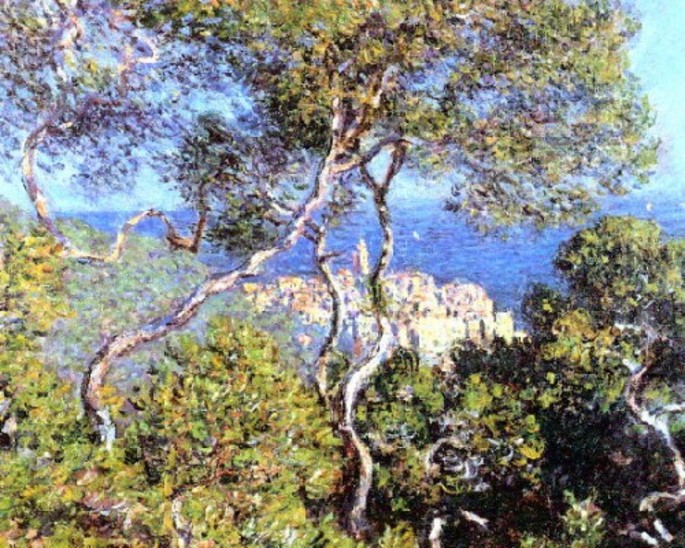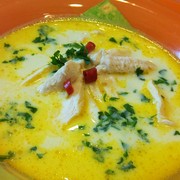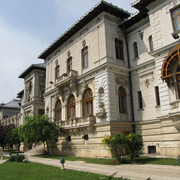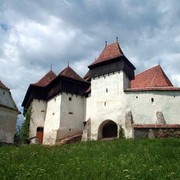In December 1883, Claude Monet, with his friend Auguste Renoir, made a short trip to Liguria and the south of France. He liked the landscape and the December light so much that in January he went back to Liguria to find new pictorial inspiration. The nature around Bordighera was for Monet (and many other artists) very attractive and appreciated for its blooming vegetation, with the typical country landscape from the coast to the hills and many luxurious villas and hotels with beautiful gardens built for the European nobility.
One of these is Villa Etelinda, whose little tower and garden full of palm trees, agaves and olive trees appear on many of Monet’s paintings, with the Roman road and the Ligurian Alps in the background. Thanks to a person he knew in Marseilles, Monet got a permission to visit and study the blooming vegetation of Villa Schiva's garden, where he found the highest Pinus canariensis in Europe (35 m high), a huge palm tree (Jubea spectabilis) and a nice Ginkgo biloba. The high tower houses, the town walls and the Bordigheta bell tower of the upper town also feature in many of his paintings, surrounded by olive trees, pines and palm trees, seen from the Mostaccini tower point.
As Monet wrote, it is possible to feel the artist’s effort to transfer the light and the colours to his paintings. The Sasso valley was very inspiring for some of Monet’s paintings. Another theme was the ancient tower among the palm trees on the other side.
In 1888, Monet visited Antibes, in the south of France, and in 1908 he made one of his last major excursions to the Mediterranean. He depicted the panorama at different times of day: the bay, a gardener's house, an old fort and four vistas of the town from the same viewpoint, a spot called La Salis. The elements of these simple works are a group of pine trees along the shore, the town of Antibes in the distance and the background of the Maritime Alps.
Monet often represented the times of the day when light gives its most dramatic effects: sunrise, midday and sunset, such as in views of Cap Martin, near Menton (1884). Monet's pictorial style is the quintessence of Impressionism, with contrasts between the intense light of the southern sun burning bright on the coast and the deep calm blue waters of the Mediterranean. When painting the olive groves and trees, he focuses on the chiaroscuro effects of light and shadow and, as the light through the trees changes, so does the temperature and atmosphere of the entire scene.
These effects and the colours they create are the key not only to this series, but to the entire oeuvre of Monet.










